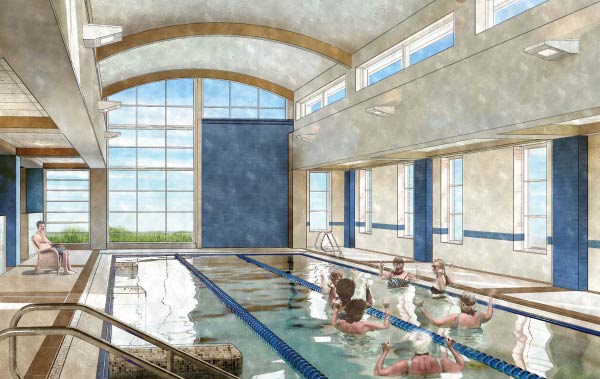Rehabilitation therapy is a practice with techniques that have stood the test of time. The idea of aquatic therapy isn?t new ? people have been using water to alleviate pain for the majority of human history ? but mainstream acceptance of aquatic therapy as a form of physical therapy has been relatively recent. Now, the American Physical Therapy Association recognizes aquatic therapy as one of 17 specialized forms of physical therapy available to patients across the country. If you haven?t already incorporated aquatic therapy as part of your physical therapy practice, why not? Read on for some information on the benefits of aquatic therapy and how to determine your potential return on investment if you decide to add aquatic therapy to your practice.
What Is Aquatic Therapy?
If you?re working in physical therapy, we hope you?ve at least heard of the concept of aquatic therapy. For those who don?t know, aquatic therapy is a form of physical therapy that incorporates exercises and movements in a water-filled environment. Not only does the water reduce the impact of many of the exercises, which can be beneficial for individuals who are recovering from injury, but it also adds resistance without the need for weights or exercise machines. Therapists have successfully used water to treat their patients for more than a century, but aquatic therapy wasn?t covered by insurance for a long time. The first recorded instances of aquatic therapy were in the 1900s, and even Franklin D. Roosevelt used a form of aquatic therapy to aid his ailing body after his battle with polio. It wasn?t until the late 1960s that it gained acceptance as a form of therapy in the United States, though, and it became coverable by insurance at that point. Now, Medicare has been spending upwards of $46 million a year in reimbursement for aquatic therapy alone, and those numbers are still growing every single year.
How to Determine Your Return on Investment
In this case, a little bit of basic math can lay the groundwork to help you determine whether it?s worth it to invest in an aquatic therapy program. First, determine what kind of pool you?re going to need. There are a variety of therapy pools on the market, depending on the kind of therapy you?re planning on offering. Choose a pool that will fit in your space, and will enable you to offer different types of aquatic therapy. Figure an average of $200 per square foot for most pools, not including integrated equipment ? some pools come with things like integrated underwater treadmills, so keep those in mind! Next, consider your average reimbursement rate, which will depend primarily on your location. Talk with local insurance adjusters to get an idea of the average reimbursement for this kind of therapy. Keep this number in mind as we continue. Now, look at the number of patients you expect to see every day. Give yourself a few months to build your aquatic therapy program ? even if you?ve got a lot of people asking about the availability of aquatic therapy, it might not take off as quickly as you hope. Estimate how many patients you want to see per day once your program is established ? and cut that number in half for the first few months while you?re building everything up. Finally, estimate how much the pool will cost in terms of utilities, chemicals and maintenance every month. So, let?s break this formula down.
- Initial investment in a 26? x 17? pool room at $200 per square foot = 442 square feet = $88,400 Note: This is an estimate for the purposes of our calculation.
- Average reimbursement = $50
- Patients per day, months 1 through 4 = four
- Daily reimbursement = $200
- Monthly reimbursement = $6,000, assuming 30 days per month
- Total reimbursement for months 1 through 4 = $24,000
- Maintenance and supplies for months 1 through 4 = $250 x 4 = $1,000
- Progress toward ROI for months 1 through 4 = $23,000
Now, once you?ve successfully established the program, you can watch your numbers climb. If those numbers continue to grow, and you double the number of patients you?re seeing per day in the next four months, you could add another $46,000 to this investment, bringing your ROI total to $69,000. Add two more months, for a total of 10 months, and you?ve reached your ROI and can start actively making money with your aquatic therapy pool. Now, this is just an estimate, and your numbers will vary depending on things like installation costs, the number of patients you see during your establishment period and even the cost of things like water and electricity in your area. Finally, do you have someone on staff who is trained and certified in it? If not, now is the time to start either looking for a new employee, or sending one of your existing therapists to training ? ideally, while you are getting your pool built. Aquatic therapy is a unique specialization that requires additional experience and education to ensure you?re providing the best care for your patients. Aquatic therapy is an excellent tool to help improve the therapy outcome for a variety of different types of patients. If you?re considering adding an aquatic therapy pool to your physical therapy practice, keep these numbers in mind ? with a successful aquatic therapy program, you can potentially recoup your investment in less than a year.






